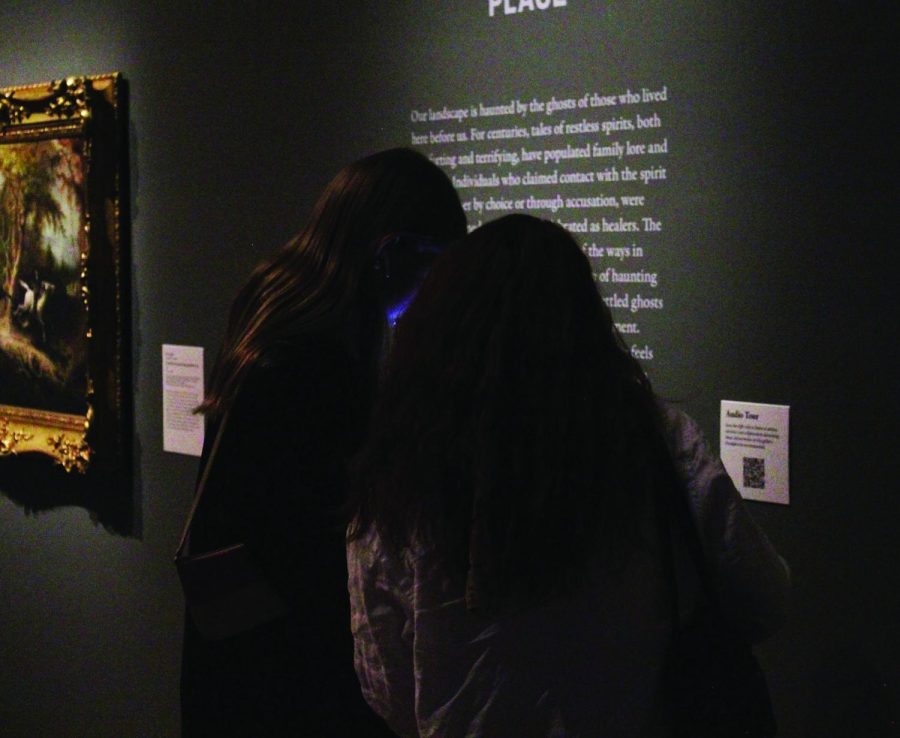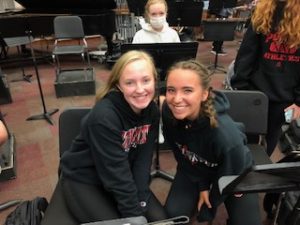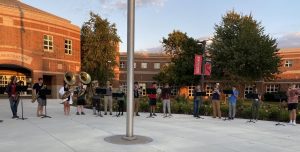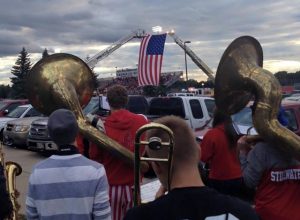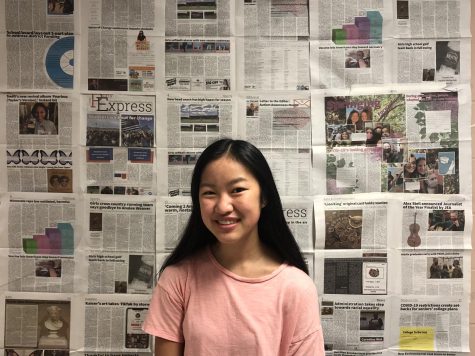MIA supernatural exhibit designs an eerie art experience
April 22, 2022
Ghosts, ghouls, gods and everything in between haunted the mysterious pieces in the supernatural exhibition at the Minneapolis Institute of Arts. Artists shared their take on the haunted side of America and their personal paranormal experiences. The exhibit was held from Feb. 19 until May 15. MIA members got tickets for $16 and general admission tickets were $20. Both Investor+ and youth under 17 got to see the exhibit for free. The exhibit was held at the Toledo Museum of Art in Ohio and the Speed Art Museum in Kentucky, and the final stop of the tour was at MIA. Each of the pieces gave off an unexplainable feeling that made the exhibit an ominous experience to walk through.
The MIA exhibit was titled Supernatural America and displayed art from people who experienced the paranormal. Curated by Robert Cozzolino, this exhibit was created by a team of 14 artists and advisors. Marvin Cone, Agatha Wojiechowsky and Thornton Dial are among the many artists that had their work on display. Tours of the paranormal exhibit were available both virtual or with an in-person guide.
“Robert Cozzolino is passionate about honoring artists whose art was marginalized and who were marginalized themselves,” MIA guide Sara Wagner said.
The paranormal exhibit had seven sub-exhibits. Ranging from hauntings to plural universes, the sub-exhibits had pieces that date back to the post-World War II period. The exhibits were titled “America as a Haunted Place,” “National and Personal Haunting,” “Apparitions,” “Imagining the Unseen,” “Objects and Rituals for the Spirit,” “Spirit Artists,” and “Plural Universes.” They covered parts of paranormal America that many are not aware of.
“Up to 85% of the art in the show was by artists who have had experiences that they can’t explain. And they’ve often said, ‘oh, no one’s ever asked me about this art.’ People didn’t want to believe it,” Wagner explained.
This was a different side of art that many either do not believe in or does not appeal to them. It is rare that any type of art highlights the paranormal, let alone a whole exhibit about it. Having the exhibit centered around the supernatural had sparked interest for many guests. The pieces gave off a different energy compared to the emotions you feel from most art viewed in a museum.
“The desire to know things that we can not explain is universal and something that we as humans and as curious creatures all enjoy. It’s a character study on how our own human nature ties into things that we don’t know,” junior Mason Borchardt said.
Inspiration can come from anywhere. After having unexplainable experiences, artists used art to channel and express their feelings. With so much to experience and so many different perspectives on the world around us, art can display anything, seen and unseen. The exhibit had a variety of different pieces created through different mediums, such as oil paints, watercolor, crayons and steel. Some artists had spiritual guides or were in trances as they created their art.
When creating a piece, Finch finds inspiration from his surroundings. He takes his audience’s perspectives into account when making his art and is conscious of how others will perceive it.
MIA is an inclusive museum. Most of their exhibits are open and free to the public, so everyone can experience their art. They reach out to artists that are unknown, or are marginalized, to share their expressions of the world. Unlike some museums, MIA makes an effort to support and display pieces from the BIPOC and LGBTQ+ communities.
Finch explained the connections and the money required to be featured in an exhibit, but he appreciates that the MIA “has exhibits that celebrate local artists and also includes a lot more voices.”
The supernatural exhibit was a very unique experience that gave off an eerie feeling of wonder. At the MIA, they presented the pieces in an atmosphere that people found intriguing and different. The artists used their work to speak for experiences that do not typically get as much recognition. By creating a foundation for paranormal art to thrive, the MIA team made the experiences of the few available to the many.
“Whenever there’s some sort of paranormal or supernatural contact, there’s a story to go behind it. This art can have an easy and accessible meaning behind them. It’s so deeply tied to storytelling and the way that we communicate,” Borchardt said.


